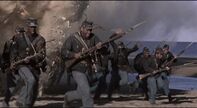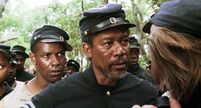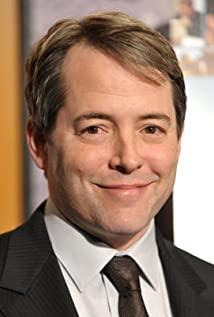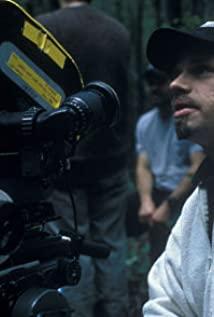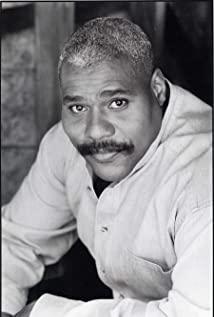Since the late 1980s, the American film and television industry has produced a number of film and television programs featuring black people as the protagonists and depicting their lives and histories. Some critics have pointed out that this is just a tactic used by Hollywood to attract large black audiences; especially in southern states with a large black population, movies are still the main form of entertainment, and movie theaters are still a place frequented by young people. Some critics are optimistic that this marks the victory of the American human rights movement and the anti-racial discrimination movement, and also illustrates the self-awakening of the majority of black people and the efforts of black artists. Of course, some critics pointed out that many works—especially those written, directed, and performed by black artists—exposed a prejudice against white people and self-isolation, and went to the other extreme. For example, in some film and television programs, no white people appear from the beginning to the end, or white people are depicted as thugs, bad guys, etc. Among a large number of black films, "Glory" can indeed be called an excellent work.
The American Civil War has always been a creative subject of interest to Hollywood. However, most of these films always take the South and the Confederate Army as the object of eulogy, although the Union Army led by President Lincoln is the party representing justice, the victory of the Union Army really maintains the founding spirit of the United States - that everyone is born equality. From Griffith's blockbuster "Birth of a Nation" to the still-popular "Gone with the Wind," released in 1939, the war is viewed from the South, in which the Union Army is portrayed as a rabble . However, in The Glory, the Union Army is described as a righteous army fighting for freedom, and, as many critics have pointed out, this is the first film to celebrate the heroic sacrifice of the Union Army's Black Legion in the American Civil War. art video. After the film was released, it caused a lot of repercussions in the southern states. Some states began to count the list of black soldiers who participated in the war that year, and planned to build monuments to honor these heroes.
War movies have always been a popular genre in Hollywood. But as the director of this film pointed out, in recent years, a large number of war films have used the war as the background, or made some sensational melodrama, or expressed a certain idea. For example, in a large number of films describing the Vietnam War, the war is only an environment and background, and there are many exaggerated and even fictional elements in the film. Coppola's Apocalypse Now is more symbolic than practical. Director Zwick emphasized the difference between this film and other war films. He said: "We don't want to distort history and create a drama." This war (Civil War) is history, and it is the content of the film. In order to reproduce the historical reality, the artists read a large number of historical materials with passion, from the selection of location, to the production of military uniforms, guns and a large number of props, they are as close to the reality of the time as possible. Even the colors of the props, such as military caps, are dyed with green paint, which was a specialty of Massachusetts at that time, although there is nothing special about them in the film. More than 1,500 people were mobilized to take part in the filming of large-scale battles, and most black soldiers were selected from southern states. Although director Zwick lacked the experience of shooting big scenes and lacked the courage like Coppola, he did his best to depict the fierceness and brutality of the battle. There are many majestic scenes in the film, such as the high-altitude shooting of the battlefield after the battle.
Photographer Francis is a talented artist. He did not use dark tones to photograph war like other photographers. Instead, he used a brighter tone to photograph the majesty of war. a war for freedom. He was later invited to shoot a TV series of the same name, but he was dissatisfied because the tone on the TV screen was so different from the movie. One can also recognize the great difference between the two visual arts.
Broderick is a black actor who has become popular in recent years. He is a typical acting actor, known for his delicate expression of inner emotions. In this film, he shows the growth of a black soldier in layers: from freely opposing racial discrimination and slavery to becoming a demanding but very loving soldier commander, and finally becoming a soldier fighting for freedom. A dedicated warrior, Broderick convincingly represents this growth process. At the beginning of the film, Robert Shaw only thought that "we are fighting for thousands of men and women, and our battle song will always echo!". It's just a young warrior romance. And later, when he got into an argument with his boss, he angrily pointed out the difference between blacks and whites: "I do it as hard as I can! I don't know these people (referring to white officers and soldiers) and their music. , the partnership between them is far from ours. But I have great patriotic enthusiasm and real courage, and I will try my best to adapt..." By this time he had grown up from a passionate warrior with romantic ideals A hero who was determined to die in the face of a harsh reality - racism. On the march, he was very strong. The long and difficult march had exhausted the soldiers, but in order to show the military might of the Black Legion, Robert Xiao Qiang raised his chest and led the soldiers to sing the Black War Hymn. This is a very touching scene: the soldiers are wearing old military uniforms, worn military boots, and some are injured, but they are all in high spirits, expressing their spirit with vigorous battle songs - slave songs of black people fighting for freedom. The determination to sacrifice heroically. Viewers here can't help but salute like those white officers. Broderick's performance, coupled with the cinematographer's shot scheduling and the majestic black military anthem, makes the scene extremely moving and, as some critics say, its message goes far beyond this. The plot content of the scene.
One of the most moving scenes in the film is the defense of Fort Waconer in Charleston, South Carolina. The magnificent war scene, coupled with special sound effects: bugles, cannons and thunder intertwined, plus special effects, make this war scene very spectacular. In American war movies, the battlefield has been terrifying recently. But this film reflects a kind of classical beauty, just like the ancient Greek epic "Iliad" of the Trojan War. Zwick seems to have a strong preference for single-camera long-lens shooting, and he carefully designed this shot with a long-lens, single-camera shot that constantly changes angles and focal lengths. There are some very successful and magnificent sequences, such as the camera pans back and sees the black soldiers charging forward one by one. Falling down and never backing down - this is the only shot in the film that sees a black soldier from the Confederate (enemy) perspective. After the war, the director specially used a large panoramic shot. The far and middle shots are the battlefield with corpses everywhere, and the close shots are the guns and a small grave on the ground. As soon as the camera turned, the battle flag of the Union Army was flying proudly on the Wagonerburg position, symbolizing the victory of the Union Army.
Comparing the development trend of American war films in recent years, especially the large number of films depicting the Vietnam War, people will feel that Zwick seems to be reliving the old dream of American war films in the 1950s, that is, the positive praise of war and heroes. Of course, from a historical point of view, the Civil War was a decisive battle between justice and injustice, and the Union Army led by President Lincoln was just, completely different from the war of aggression against Korea and Vietnam carried out by the United States in the second half of the 20th century, so Zwick The chants of the Union Army are right. After watching this film, people can't help but think, since the "Vietnam War Memorial" has been established in Washington, should another monument be built to honor those black soldiers who died for freedom in the American Civil War?
View more about Glory reviews



